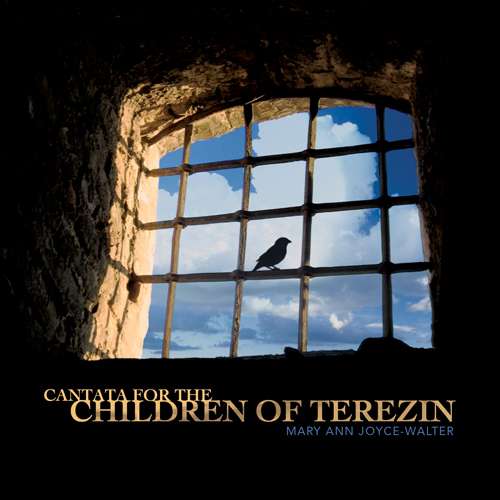|
Back
02/05/2013
Mary Ann Joyce-Walter: Cantata for the Children of Terezin – Aceldama
Oxnaya Oleskaya (soprano), King Singers of Kiev, Kiev Philharmonic Orchestra, Robert Ian Winstin (conductor)
Recorded at the National Radio Studio, Kiev, Ukraine (2007) - 50’
Ravello 7845

   
The Holocaust looms so horribly over history that it is a daunting subject - or set of subjects - for an artist to tackle. In her Cantata for the Children of Terezin U.S. composer Mary Ann Joyce-Walter has effectively focused in on the plight of children (there were some 15,000) held in the Terezin (or, in German, Theresienstadt) concentration camp.
Terezin has become well-known in recent decades because of the musical activity that occurred there, a result of the fact that it was used by the occupying nazis as a prison for the Jews (and other “undesirables”) from the musically-vibrant city of Prague. (Viktor Ullman’s Der Kaiser von Atlantis and Han Krása’s Brundebár are works that now receive frequent performance.) Joyce-Walter’s cantata is not about that; she has fashioned a text using English translations of poems written by four incarcerated children.
The 38-minutes work has nine sections. Three are orchestral and the other six are settings of the poems. The mood varies from the portentous (as in the opening “Transport 5:30 A.M.”) to the yearning (“Home”), the playful (“A little mouse”) and the plaintive (“A little song without words” during which the orchestra evokes a klezmer band). The eighth section is “Evening transports” which seems to end the piece, but then there is a coda, “Someday”, the longest section, that seems an unnecessary reprise of much that has already been stated.
There is no information as to whether the work has ever had a live performance - which is something I would be eager to experience. For one thing, a live performance would most likely be more persuasive than the one on this recording. The biggest drawback is enunciation. It is obvious that Ukrainian soloist and chorus are not all that well acquainted with English. I suspect there was little rehearsal - and a recording of such a work would ideally follow a performance or (better yet performances) so the singers and players could be more incisive. The poem about the mouse stands out as it is straightforwardly read (with instrumental accompaniment) by a child who speaks English well. The soprano soloist, Oxnaya Oleskaya, has a wonderfully expressive voice, however.
Another problem with the recording is that a couple of segments are broken off before the final notes die away.
The other item on the disc is the 13-minute orchestral piece, Aceldama. The name (also spelled Akeldama - it means “field of blood”) - comes from a place in Jerusalem associated with Judas Iscariot that later became a graveyard. It represents a place where the sorrows of the world are absorbed. The result is a skillfully constructed threnody. Yes, it’s very solemn, but it avoids dreariness. Like the cantata, it is a viable work deserving of performance. Either one would be suitable for a commemorative concert.
There is a booklet with the texts of the poems (not in the same order as in the performance, although this isn’t a problem). The disc can also be inserted into one’s computer to retrieve more material, notably the full scores.
Michael Johnson
|